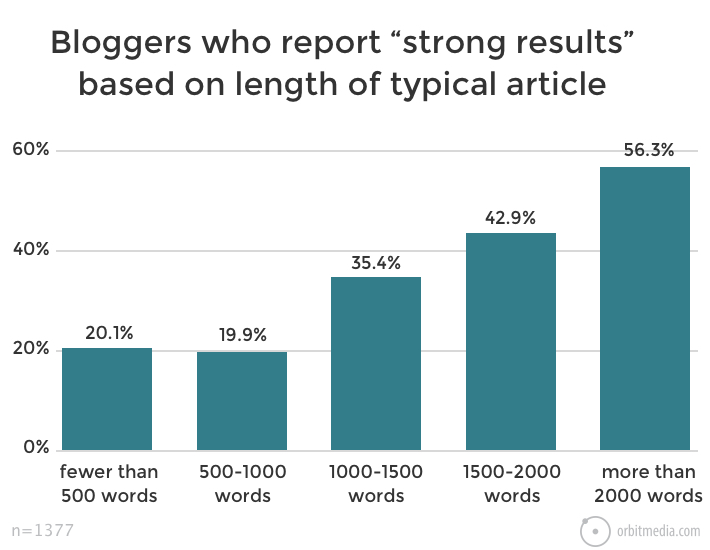
Do you remember upgrading from an old square TV to a high-definition model? It was an amazing leap forward in the viewing experience.
Then came 3D televisions…and no one really cared. Then even bigger screens, then curved displays, OLED, smart TVs, 3D and 4k. None of these advances have really fired up the imagination of the TV-buying public. These incremental improvements just aren’t compelling enough to inspire me to upgrade.
The same thing happened with smartphones. The iPhone’s touchscreen-only design was revolutionary, and now every modern phone is a sleek rectangle. Since then, it’s been incremental change and vanity features. I can unlock this phone with my face instead of my fingerprint? And I can turn into an animated dancing unicorn? Yawn.
Content marketing had its watershed moment a decade ago, marking a monumental shift in the way marketing works. Hard selling and SEO trickery gave way to relationship-building and bringing real value to customers. Since then, we’ve been refining the formula. We’ve added new gimmicks and made small adjustments. But marketers are long overdue for a new paradigm shift.
When you’re watching content marketing trends for this year, look deeper than the marketing equivalent of 4k and curved displays. Look for the quiet revolution that is starting to take hold—look for the fundamental changes in the way we approach content.
Here are my picks for the next major movements in content marketing.
#1 – Long-Form Content
As I’ve said before, content is moving beyond the 500-word blog post. Consumers and B2B buyers simply want more depth and value than short content can provide. Even if your 500-word post does attract significant traffic, it has an inherently short life span.
Orbitmedia’s yearly blogging survey shows that the most successful bloggers are spending more time creating longer posts. The average length of a typical blog post has risen from 808 in 2014 to 1,142 in 2017.
These longer posts are attracting more audience attention. The percentage of bloggers reporting “strong results” goes up steadily with the average word count of their posts:

While short blog posts still can serve a marketing purpose — attracting subscribers, promoting thought leadership — the most successful will re-evaluate short-form content as the basic unit of content marketing. Ungated long-form content is vital to meeting audience expectations.
#2 – Consistency & Quality over Quantity
As marketers shift from short-form to long-form content, it’s going to get harder to maintain a daily (or multiple times daily) publishing cadence. Daily publishing has been the table stakes for blog content for years, but there’s untapped value in slowing the cadence. You know the drill: The amount of content keeps increasing, while people’s time to invest in content stays the same. If you’re challenged to keep up your daily cadence, odds are your audience is, too.
Our clients at LinkedIn Sales and Marketing Solutions EMEA dropped to 2-3 long-form posts a week last year, and have seen their readership continue to rise. The shift inspired our blogging team to try the same experiment on the TopRank Marketing Blog in 2018. More value, less content, delivered consistently — it’s a paradigm shift from “post daily, however much you can, even if it’s 300 words.”
#3 – Influencer Marketing Ecosystems
At the least sophisticated level, influencer marketing is essentially celebrity endorsement. You pay the influencer, they promote your brand, and the relationship ends as soon as the check clears. 2017 may be remembered as the year the influencer bubble burst, as the payouts grew astronomically and high-profile influencers proved problematic.
We published Influence 2.0 in January of last year to help marketers reach the next stage of influencer marketing maturity. Sustainable influencer marketing is relationship-based, co-creation based, and provides mutual value for influencers, marketers, and audiences.
The ultimate goal is to move beyond one-off collaboration with individual influencers. It’s about creating and nurturing a community of influencers, all of whom are aware of each other’s work with the brand. This influencer ecosystem takes relationship-building to the next level, and can result in a steady stream of great content.
Check out our top influencer marketing posts of 2017, as well as more insights from Lee Odden on what’s coming in 2018.
#4 – A New Focus on ROI & Attribution
As the functions of sales and marketing increasingly overlap, marketers need to get serious about proving ROI. We’re in the revenue business just as much as our partners on the sales side, and everything we do should have measurement built in. Yes, even top-of-funnel content meant to generate awareness. Do you know the value of a visitor to your website, a subscriber to your blog, or a filled-out landing page form?
If you don’t have clear answers to the above questions, you’re not alone. According to CMI and MarketingProfs’ annual content marketing benchmarks, only 35% of marketers can accurately measure ROI. Even in the top performers, only 55% are measuring ROI consistently.
In 2018, content marketers who can properly attribute ROI and prove the value of their efforts will be more successful. So it’s time to nail down the value of your content marketing, measure it, optimize it, and give dollars-and-cents reports to the C-suite.
#5 – Strange New Formats
I used to hate the phrase “consuming content.” Okay, so I sort of still do. But my loathing for that phrase may be short-sighted. It seems simpler to say, “reading content,” but that’s still thinking in terms of print, blog posts, eBooks and infographics. Our definition of what constitutes content has already moved beyond these forms, and is going to change radically in the coming years.
Video content production soared in 2017, as marketers figured out how to cheaply produce video and we began dipping a toe into livestreaming as well. In 2018, we can expect to see more video and more strategic use of live video. Audio content is on the rise, too: Podcasts are still surging in popularity and showing no signs of slowdown. And interactive content is getting easier, too — it’s simpler to make increasingly cooler end products.
But the definition of content is about to get even wider. Chatbots will need compelling writing to bring them to life. Amazon Echo and Google Home are new platforms for completely novel types of content, such as the American Heart Association’s CPR instructions and Neil Patel’s Marketing School. Augmented reality is coming to the masses, offering new ways to tell stories and engage an audience.
The Next Evolution
Content marketing is long overdue for a radical redesign, and all signs indicate the next evolution is already in progress. What content is, what forms it can take, how we amplify and measure it — these fundamental aspects of the discipline are all up for debate. It’s up to all of us to stay flexible, stay up-to-date, and most importantly, keep listening for what our audience says they need.
What do other marketers have to say about content marketing in 2018? Read Content Conversations: Content Marketing Predictions for 2018 featuring insights from Ann Handley, Joe Pulizzi, Chris Brogan, Alexandra Rynne, Tim Washer, Dayna Rothman, and Chris Moody.

Comments are Closed